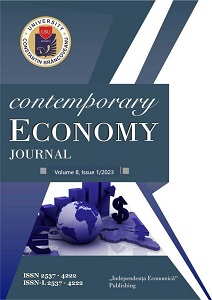MEASURING REGIONAL COMPETITIVENESS AT THE LEVEL OF THE EUROPEAN UNION
MEASURING REGIONAL COMPETITIVENESS AT THE LEVEL OF THE EUROPEAN UNION
Author(s): Corneliu-George Iacob, Emilia IordacheSubject(s): Business Economy / Management, Regional Geography, Methodology and research technology, Economic development
Published by: EDITURA INDEPENDENŢA ECONOMICĂ
Keywords: competitiveness; European Union; updated RCI 2.0 methodology; performance;
Summary/Abstract: Competitiveness is a concept with multiple meanings, which led to the appearance of an important number of definitions: we encounter the concept of competitiveness at the national level, but also at the company level. Competitiveness considers all the elements that explain the success of a nation, from a global perspective. Competitiveness looks at how both nations and firms use the totality of their skills to achieve prosperity and profit. Competitiveness is relative and not absolute because it compares the performances of nations or companies with each other. The competitiveness of a country is one of the main aspects that ensure the country's evolution at the regional and even global level. The sources of competitiveness may differ for a country depending on its economic, political, cultural position, but also on the group of countries to which it refers. Since 2010, the European Union Regional Competitiveness Index measures the main competitiveness factors for all NUTS-2 level regions in the European Union. The index measures, with the help of a set of indicators, the ability of a region to offer an attractive environment for companies and residents. Starting in 2022, this index is based on an updated RCI 2.0 methodology.
Journal: REVISTA ECONOMIA CONTEMPORANĂ
- Issue Year: 8/2023
- Issue No: 1
- Page Range: 39-47
- Page Count: 9
- Language: English

